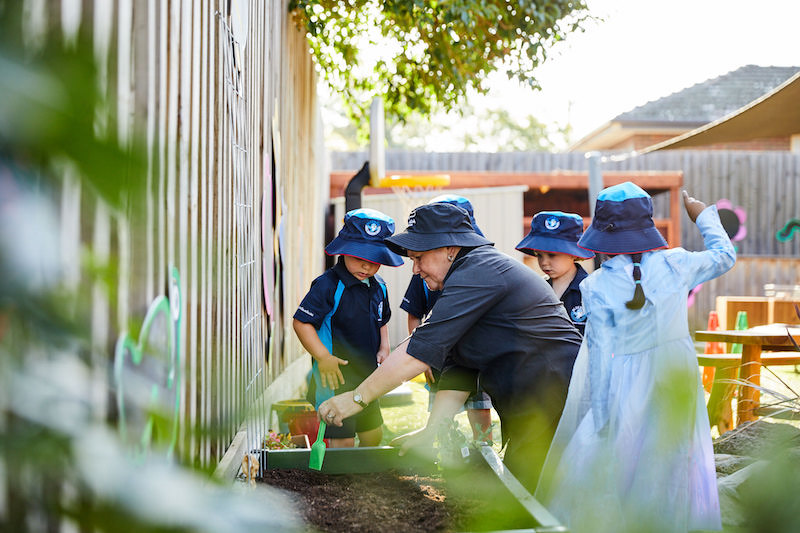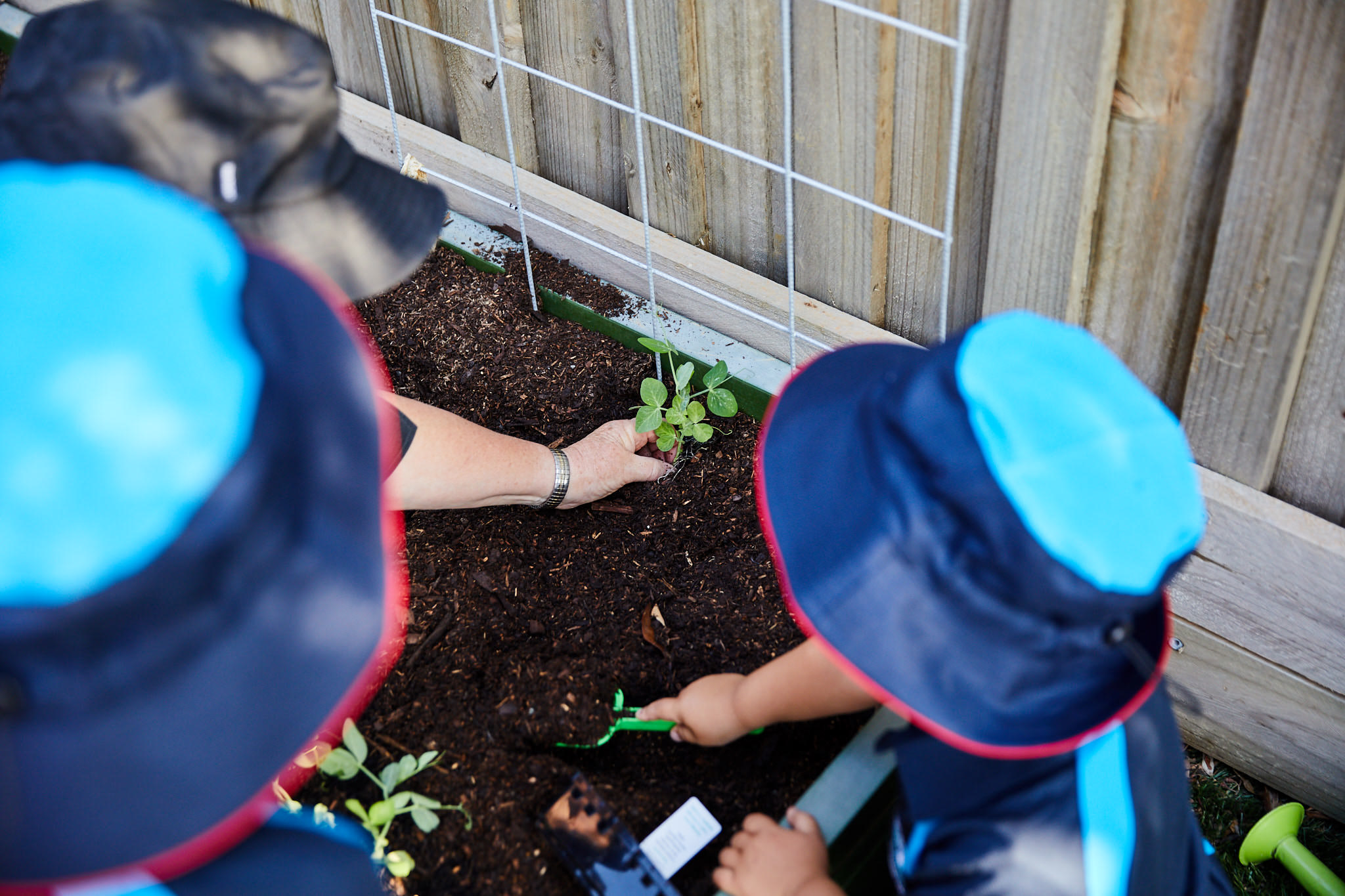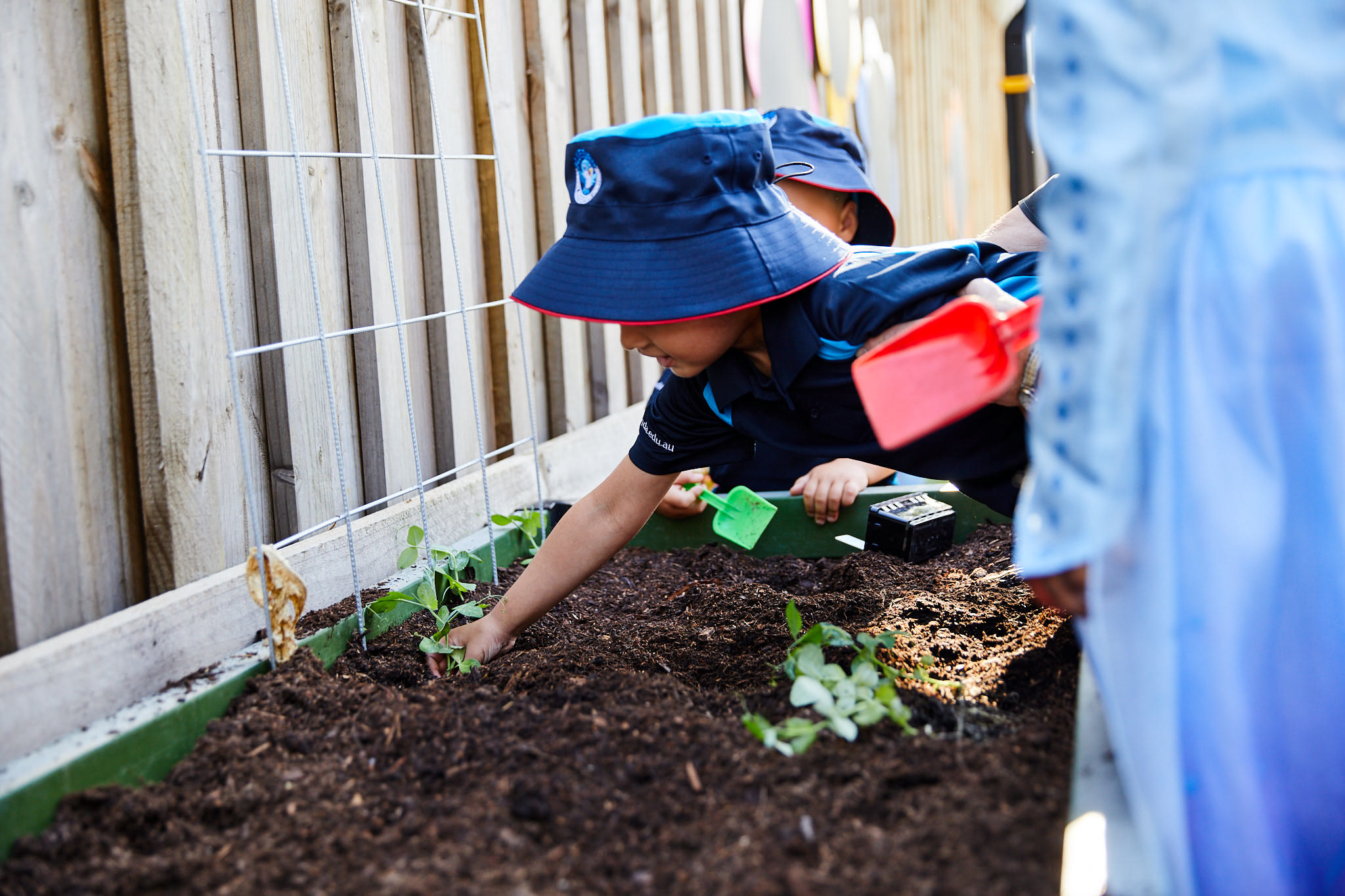
Ask a child where fruits and vegetables come from, and many would answer ‘The supermarket!’ So often children don’t have the understanding of how food is grown or how much work goes into it.
That’s why child care centres like Bluebird Murrumbeena in the suburbs of Melbourne are gardening with children to teach them about how food ends up on their plates.
Toddle spoke to Judy, a kindergarten teacher at Bluebird Murrumbeena, about her passion for gardening and what it’s like to teach little ones where their food comes from.

What is the purpose of the vegetable garden?
Judy explained that part of the plan was for the veggie gardens to provide produce for the kitchen, but all too often the food disappears as soon as it’s picked! ‘It’s lovely really, the children often eat the produce before it reaches the table, especially the strawberries and mint!’
The vegetable garden is one of the most popular activities at the centre, Judy explained. Even the youngest children in the nursery can benefit. ‘Recently we picked a cauliflower and the children took it to the cook to use in a tasty puree lunch for the babies.’
For the older children, having grown something themselves makes them more likely to want to taste it. ‘Some of the children didn’t eat the food previously, but with encouragement from their peers they will try it.’
It’s also a good distraction explains Judy. ‘Often a child who has difficulty separating from parents or becomes upset during the day can be redirected with the garden.’
‘Currently we are growing cauliflower, broccoli, passionfruit, lavender, pansies, herbs, strawberries, lettuce and radish.’
What are the benefits of gardening in childcare?
‘Everything really,’ explains Judy, ‘they learn science, maths, social skills, literacy, sensory development, life cycles, gross and fine motor development.
Gardening involves so many learning experiences, children can be involved for as long or short as they wish.’
Judy explains each element in more detail.
> Science
The children learn about:
- being water-wise
- where to water the plants
- what happens if a plant goes to seed
- what grows above ground and underground
- how the roots work
- where to position plants
- how can we stop the insects eating our food without hurting the environment
> Maths
The children learn about:
- how much water do plants need?
- how many plants are we planting?
- how far away do we need to plant the plants?
- how tall will the plant grow?
- will the plant need support to grow tall?

> Social skills
The children learn:
- patience, as they wait for produce to ripen or grow big enough to harvest
- sharing with each other when it’s ready to pick
- taking turns to dig in the soil or water the plants
- sharing theories with each other about how it will grow or taste
- sharing information with educators and families
- the life cycles of insects
- the importance of washing hands and food
> Sensory development
The children learn about:
- Taste: how food tastes different depending on if it is cooked or raw; and whether it is ripe or not
- Sight: how the produce and plants change as they grow and die
- Smell: how to tell if something is ripe based on the smell; how to tell herbs apart based on the smell.
- Touch: using hands to dig the soil, plant the seeds, harvest the produce; feel if something is ripe and ready; feel how heavy or light something is.
- Sound: listening to instructions from the educators; listening to peers.
Life skills
The children learn so much here including:
- how to use knives to cut the produce
- how to manage the insects that like to eat our produce
- how to plant the plants, where to position them
- the life cycle of plants
Literacy
The children help to read the labels and learn the names of plants.
Motor skills
‘The children learn both gross and fine motor skills in the garden,’ explains Judy. ‘They learn to manipulate tools, use their hands to dig or harvest, pick up and use watering cans and gardening tools, and carefully hold seedlings.’

What do the children think of the vegetable garden?
‘The garden has been operating for about 6 months now, so it’s still new and exciting for the children,’ explains Judy. ‘Often the children will take their parents to visit the garden, to show them what we have planted and what they did to help.
The children love that it is theirs to look after, and that it is always changing. They like that they’re allowed to get involved with it and get their hands a bit dirty.’
Any advice for parents who want to recreate this at home?
‘Veggie gardens don’t have to be large,’ explains Judy. ‘Veggies can be planted in pots, planter boxes, a special bed or amongst flowers. Including children in growing and cooking the produce inspires them to try it, so it’s great if you have a fussy eater.’
For Judy, the conversations that evolve from the garden make it worthwhile for parents to try to recreate it at home. ‘The children often surprise me with their knowledge, and their theories of how something will grow.’
Why not get your little one involved with gardening at home, to enjoy the benefits of having a green thumb? Gardening with children has so many benefits, including the opportunity to spend time outdoor and have a slice of nature by picking fresh fruit and veg from your backyard.
You can read more about the Bluebird Murrumbeena child care centre, or find care for your little one with Toddle.